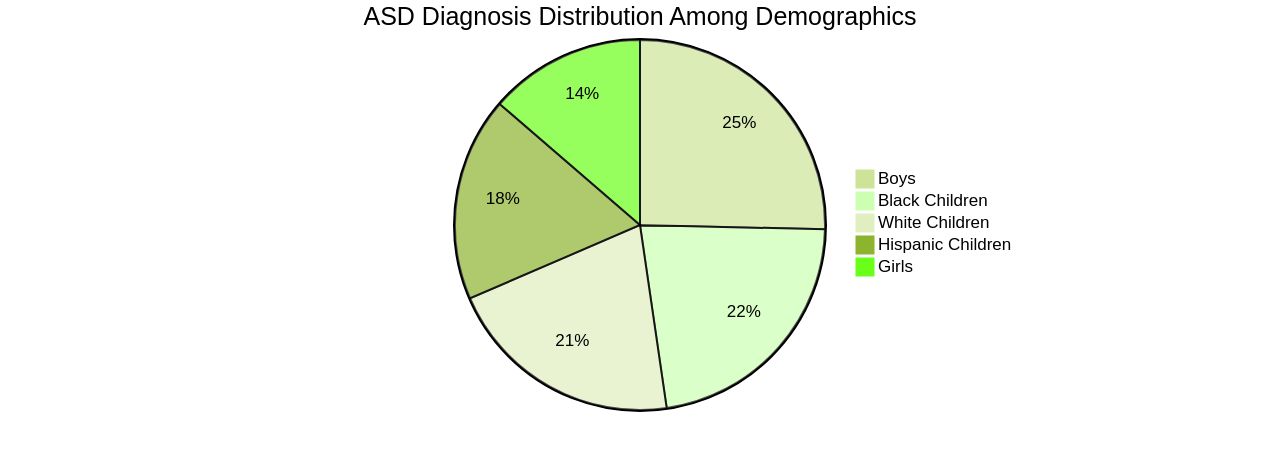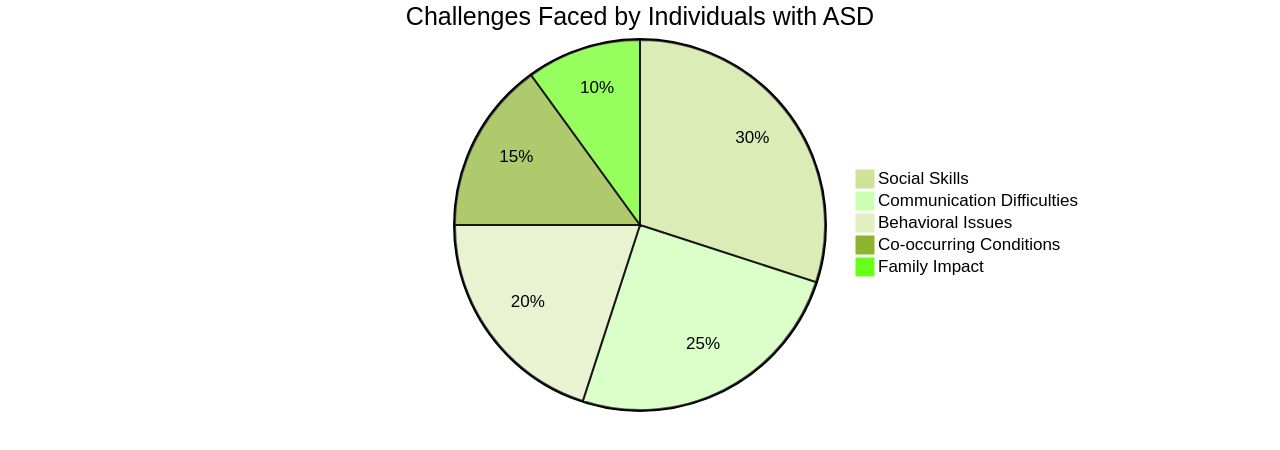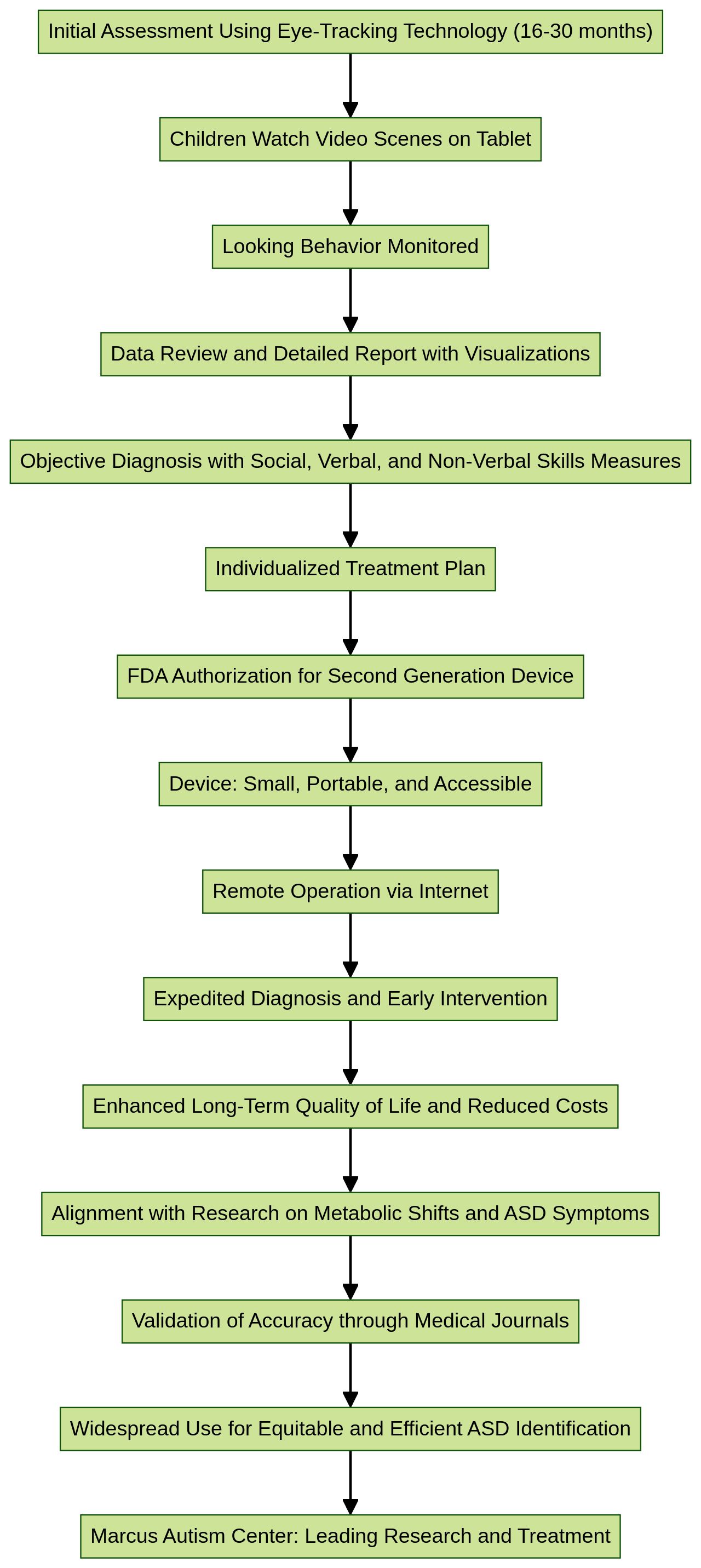Introduction
Autism Spectrum Disorder (ASD) is a complex neurodevelopmental condition that affects communication, behavior, and social interaction. With each individual exhibiting a unique combination of symptoms and abilities, it's crucial to understand the diversity within the ASD spectrum.
Early intervention is essential, but there remains a gap in research and access to effective interventions. This article explores the prevalence and impact of autism, signs and symptoms to look out for, potential causes and risk factors, as well as the importance of early diagnosis and intervention. By providing guidance and resources, we aim to empower Parent Advocates in supporting their children with ASD.
What is Autism?
Autism Spectrum Disorder (ASD) is a complex neurodevelopmental condition that presents a broad array of challenges affecting communication, behavior, and social interaction. Each individual with ASD exhibits a unique combination of symptoms and abilities, which is why it's considered a spectrum.
Some may struggle with social cues and engage in repetitive behaviors, while others may experience sensory sensitivities or have difficulty with verbal and non-verbal communication. Recognizing the diversity in ASD, it's essential to understand that interventions and support strategies must be tailored to each person's needs.
Recent studies emphasize the importance of early intervention, particularly from birth to age three, which can significantly influence long-term outcomes. Yet, there remains a gap in research comparing the effectiveness of various intervention programs, many of which are not widely known or accessible.
The American Psychiatric Association's DSM-5 recommends a combination of parent or caregiver reports and professional observations for diagnosis, without relying on a single tool. Specialists such as neurodevelopmental pediatricians and child neurologists often play a critical role in the assessment process.
Misconceptions about ASD abound, including the belief that it affects everyone the same way or that it's a mental health disorder. In reality, ASD is a neurological condition with a spectrum of manifestations. While no cure exists, personalized treatment plans focusing on minimizing symptoms can enhance daily living and overall quality of life. Notably, early diagnosis and intervention have been shown to have a lasting impact. Despite increasing awareness, certain demographics, such as boys and White and Black children, are diagnosed more frequently than Hispanic children, indicating potential barriers to early identification and access to services. Boys are approximately four times more likely to be diagnosed with ASD than girls, highlighting the need for continued research and tailored support.

Prevalence and Impact of Autism
Autism spectrum disorder (ASD) encompasses a range of neurodevelopmental conditions that can significantly impact an individual's social skills, communication, and behavior. The variability within the spectrum is profound, as illustrated by identical twins Sam and John Fetters.
Despite sharing the same genetics, their experiences with ASD are strikingly different, with Sam attending college and running marathons, while John requires specialized schooling and enjoys simpler pleasures like watching Sesame Street. This contrast underscores the complexity of ASD and the need for tailored approaches to support each individual's unique needs.
Understanding ASD is critical, given its prevalence—now estimated at about 1 in 36 children and 2.2% of adults in the United States, according to the CDC. Families often face additional challenges such as social stigma and lack of understanding from the community, which can exacerbate the difficulties associated with the condition.
Initiatives like the Autism Welcoming Initiative are vital, training businesses to create inclusive environments that reduce anxiety for those with autism and their families. Moreover, the presence of co-occurring conditions such as intellectual disabilities, anxiety, and sleep disturbances can complicate the management of ASD. The impact of ASD extends to the family unit, which can experience increased stress and ecological adversity. However, promising research, including studies on the efficacy of service dog placements, reveals that appropriate interventions can enhance social connections and reduce experiences of judgment, providing a beacon of hope for autistic individuals and their families. As one unknown author poignantly remarked, "Every day brings a new beginning and a new ending," highlighting the ever-evolving journey of living with autism.

Signs and Symptoms of Autism
Autism Spectrum Disorders (ASDs) present a tapestry of challenges and unique strengths. While the core signs of autism include difficulties with social interactions, such as limited eye contact and challenges in understanding emotions, it's crucial to appreciate the individuality of each person with autism. Behaviors often include repetitive actions, deep interests in certain subjects, and heightened sensitivity to sensory stimuli.
The need for predictability can make transitions and changes in routine particularly distressing. Notably, these characteristics can differ greatly from one individual to another. Recent research underscores the multifaceted nature of autism.
A groundbreaking study by the OHAIRE Group from the University of Arizona College of Veterinary Medicine, published in 'Frontiers of Psychiatry', delves into the life-altering impact of service dogs on families of children with autism. The study reveals that service dogs not only aid the child with autism but also bolster the entire family's resilience, enhancing emotional well-being and social interactions, and providing a sense of joy and inclusion. The World Health Organization reports autism affects one in 100 children globally, with a significant increase in diagnoses observed.
Understanding autism's genetic and environmental roots is vital, as misconceptions have led to unfounded fears regarding vaccines and parenting choices. Brain scans reveal structural differences in those with autism, yet a singular cause remains elusive. With this knowledge, we can better support individuals with autism to lead fulfilling lives, embraced by their communities and supported by innovations like service dog placements.
Causes and Risk Factors
While the intricacies of autism's origins remain elusive, studies indicate it's a complex interplay of genetics and environment. Genetic mutations and variations are linked with a higher autism risk, and prenatal factors such as maternal infections, exposure to certain medications or chemicals, and older parental age have been implicated.
Crucially, fears that vaccines cause autism are unfounded, as confirmed by researchers. The impact of service dogs on families with autistic children has been highlighted in recent research, emphasizing the positive influence these animals have on the entire family's resilience and well-being.
Service dogs not only support the child with autism but also serve as a beloved member of the family, enhancing social connections and reducing stigma. In the context of dog health, a study from North Carolina State University found that a slowdown in gait could indicate dementia in older dogs, linking physical and mental decline. This research underscores the importance of monitoring health signs in our canine companions, as they too can experience cognitive dysfunction with age. The study's findings reinforce the need to maintain high standards in service dog placements, ensuring these animals effectively meet the evolving needs of autistic children and their families.
Diagnosis and Early Intervention
The innovative EarliPointTM Evaluation, pioneered by Marcus Autism Center of Children's Healthcare of Atlanta, represents a major leap in the early diagnosis of autism. Utilizing eye-tracking technology, this tool is capable of assessing children's gaze patterns as early as 16 to 30 months.
It provides healthcare professionals with objective, quantifiable indicators of a child's developmental strengths and challenges. With accuracy validated by research in prominent medical journals, this tool aligns with the findings from UC San Diego School of Medicine, which emphasize the metabolic shifts between birth and the manifestation of autism spectrum disorder (ASD) symptoms.
Meanwhile, the Indiana University and Purdue University collaborative research underscores the pressing need for expedited diagnosis, as the average delay from screening to diagnosis remains over two years. The importance of early intervention cannot be overstated, with studies revealing that it not only enhances long-term quality of life for individuals with autism but also reduces lifetime costs to families and society. As the prevalence of autism diagnosis in the United States approaches 3%, tools like EarliPointTM and research into metabolic dynamics are crucial for paving the way to timely, individualized treatment plans, offering a beacon of hope for optimal outcomes in the lives of children with ASD.

Conclusion
In conclusion, Autism Spectrum Disorder (ASD) is a complex neurodevelopmental condition that affects communication, behavior, and social interaction. Each individual with ASD exhibits unique symptoms and abilities, emphasizing the need for tailored interventions.
Early intervention is crucial for long-term outcomes, but there is a gap in research and access to effective interventions. The prevalence of autism is high, with about 1 in 36 children and 2.2% of adults in the US affected.
Recognizing signs and symptoms of autism is essential, as it varies from person to person. Recent research highlights the positive impact of service dogs on families, improving emotional well-being and social interactions.
The causes of autism involve genetics and environmental factors. Misconceptions about vaccines causing autism are unfounded.
Early diagnosis and intervention are key to improving outcomes. Tools like EarliPointTM Evaluation provide objective indicators for early diagnosis. Early intervention enhances quality of life and reduces lifetime costs. By understanding the diversity within the ASD spectrum, recognizing signs and symptoms, understanding causes and risk factors, and prioritizing early diagnosis and intervention, we empower parent advocates to support their children effectively. Together, we can create inclusive communities where individuals with autism thrive.




